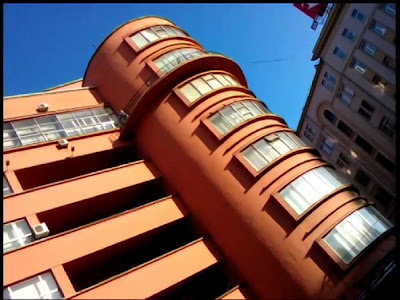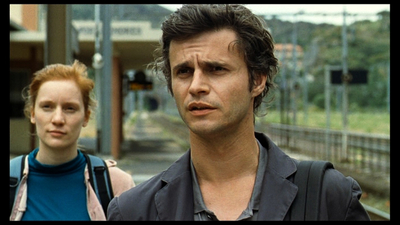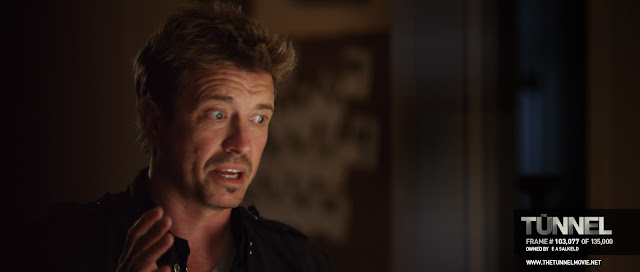Found-Footage
More from Bradford
Juan of the Dead, the first film I saw at the Bradford Film Festival this year, was by far and away the most ‘Chopping Mall’ themed film of the bunch. The others were a curious bag of experimental and inventive footage that are certainly worth a mention though. I seriously doubt any of them are in line for a DVD release any time soon, so they might be a little harder to track down, but they’re all worth a watch - and as distribution moves more and more towards digital methods, they may well be available at some point.
First up: Vikingland!

Vikingland’s story is a bizarre one (and possibly even more interesting than the film itself!). The blurb is worth pasting from the official website:
Xurxo Chirro has a passion for record keeping and works in the Archives Department of the local television company. During research, he came upon four video tapes that amounted to 16 hours of rushes and were titled ‘Vikingland’. Luis – an expatriate seaman and a migrant like so many of his fellow Galician countrymen – is the hero of this quite peculiar video saga. This is, indeed, no epic tale but a combination of anecdotes and Luis’ persistence. Between learning how to handle the video camera he has just acquired and the long hours working on the ferry-boat which sails from Denmark to Sylt Island in Germany, where he has been hired as a warehouseman, Luis recorded himself without respite for a whole winter.
So… yes. This is amateur footage shot by a sailor, re-cut by a Galician archive-keeper into something that (supposedly) imitates Moby Dick (Melville is even credited at the end as a writer…). It’s long and it’s slow but also interesting and occasionally amusing. Some of the scenes are almost painfully empty of any action (Luis sets the camera up to watch him moving boxes. We watch him moving boxes. That’s it) but other moments are more compelling.
The extended Galician-sailors’ Christmas dinner is a great scene. The wine-guzzling sailors introduce each dish to the camera and discuss how keen they are to show people what their lives are really like. In this sense it’s a pretty fascinating documentary about the minutae of behind-the-scenes life for the workers in the ship. It is too long, but apart from that it’s got a lot to recommend it. Whether we believe Xurxo Chirro’s story or not, his project is refreshingly real and democratic. There’s no real attempt to make Luis a hero, to explain his history or future, but we’re invited into his little cabin and get to see life as he does.
Next up: Moscow Diary.

Here, we’re invited to follow Walter Benjamin’s footsteps around Moscow, which he visited for six weeks in the 1920s. It’s shot entirely on a mobile phone and, as we wander the streets, parts of Benjamin’s diary are read out to accompany the film. Although he was partly there to have a look at communism in action, the main purpose for his trip was to pursue actress Asja Lacis with who he was apparently madly in love. Given that I only know Benjamin from his writings on aesthetics and technology and his academic reputation, being shown the fragile and human side to him was quite a surprise. His sad reflections on having waited up all evening in the hope that Asja would swing by are sometimes unsettlingly pathetic: it’s hard to reconcile the philosopher with the lovesick boy.
Visually, the film’s a bit uneven. The mobile-camera works well for the most part - it’s held steady and the image is decent, if not great - but that makes Adam Kossoff’s choice to occasionally use zoomed in shots puzzling because the low-resolution makes it look a right mess. I’m pretty sure by now it’s not a nostalgia-based illusion: low quality digital footage looks a lot worse than low quality film.
Moscow Diary was paired with another mid-length film about Walter Benjamin (you wait ages for a film about Benjamin and then two come along at once…) : Les Anges de Port-Bou (The Angels of Portbou)
In this one, Parisian (?) Benjamin-obsessive Séraphin comes out by train to the border with Spain to recreate Benjamin’s last journey, fleeing France for what he hoped would be safety in Spain, before eventually killing himself in the Spanish town of Portbou.

Instead of his friend, who’s supposed to be walking with him, he’s met by his friend’s sister, Gabrielle, who Séraphin reluctantly allows to accompany him across the hills. Their walk ambles between topics, taking in Benjamin’s history, the lives of people in the region and the appeal of mystery amongst other things. It’s a gently told story with plenty left open to interpretation but it’s neatly done, looks beautiful and just flies by. I’d definitely be keen to see more by the director Vladimir Léon.
Why You Should Watch The Tunnel

A week and a bit ago, The Tunnel, an indie Australian horror film was released for free online. The creators have taken a daring approach to film distribution, attempting to cover the $135,000 production cost of their film by selling individual frames on their website, releasing a deluxe DVD and organising a couple screenings. A lot has been said already about this side of the project so… let’s ignore it all together and focus on the actual film.
The Tunnel is a pretty damn decent ‘found-footage’ style movie. As such, comparisons to other similarly styled/gimmicky (delete-as-per-your-taste) are absolutely inevitable. Amongst such competition, by my reckoning, The Tunnel mounts a pretty strong defence and, whilst it’s by no means the best around, it certainly holds its own. And kicks Paranormal Activity all over the park (although, in truth, that isn’t exactly hard…)
The unique selling point in this case is the presentation of the story as a documentary, with talking-heads style interviews with several of the lead characters involved in the story. This, as should be immediately obvious, has a fairly massive downside… You. Know. Who. Survives. I’m not giving anything away here at all (I do seriously hope lots of people will watch this) but, given that we expect people to die in horror films (that’s what happens!), the fact that the film makers show us two of the four lead characters talking to the camera from the start leaves the audience to draw some fairly easy conclusions!


Minor documentary-gripe aside, they do succeed in setting up a genuinely intriguing story. With contemporary fears over water-shortages, the New South Wales government have come up with a new plan to use the miles of abandoned train tunnels that run underneath the city for water storage. For various reasons, this leads to our starring group of intrepid (and possibly implausibly stupid…) band of journalists to go exploring in the dark. Sadly, they’ve told no-one they were going (they clearly haven’t seen 127 Hours). And they’re staggeringly under-prepared and under-equipped. Even Theseus took a thread with him when he went into the labyrinth!
Needless to say, all sorts of tragedy, violence and scary noises ensues.
Again, I don’t want to go into too much detail about what actually occurs. The camera wiggles, night-vision comes and goes, screams and cries echo through the tunnels. It’s stylishly and competently put together and puts their sub-Sydney environment to good use. The only criticism I can really level at the film, however, is that with such an interesting background story created for the film, much of the detail and interest gets forgotten about from around halfway through. They’re not the only ones who do it - District 9 forgets entirely about its mockumentary format from about 30 minutes in - but it did leave me wanting a little bit more from the story. I’m not the kind of viewer who likes to be spoon-fed an easy solution, but having interested me in the story, to forget about it was a bit of a let down. Perhaps, like the creators of [REC], they intend to reveal a lot more of the story, the causes, etc. in a future instalment. Perhaps they don’t.
Either way, The Tunnel is a well-made, decently paced and enjoyable film. It’s interesting, genuinely creepy in places and leaves you wanting more (or though not in an entirely positive way). Oh, and did anyone mention that it’s free?
Who cares what I think? Head over to VODO and grab your free copy
or go and buy the DVD.